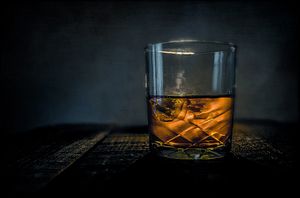President Trump’s trade war is hitting one of his most supportive states. Bourbon producers in Kentucky are increasingly worried that tariffs in Europe and across the Pacific Rim will undercut the growth of the bourbon export market. This could have far ranging effects not only on how people drink, but also on the survival of small communities across the American South and Midwest.
Bourbon is big business, and over the past decade has become even bigger business in the Pacific Rim. As Forbes points out, “the U.S. whiskey market in China is worth $8.9 million, a 1,200 percent increase from almost $1 million in 2001.” But several Pacific Rim countries have slapped tariffs on bourbon in response to the Trump administration’s trade war. China and Mexico both levied 25 percent tariffs, while Canada (more dependent on the liquor trade than the other two) responded with a 10 percent tariff.
While bourbon has made a big impact on markets across the Pacific, it is a taste-and-style driven good that is relatively easy to replace. Canadian whiskies can fill bourbon’s niche in China’s expanding liquor palette, as can European scotches. In economic terms, the demand for bourbon is highly elastic. Bourbon producers appreciate this, and worry that even temporary export disruptions will result in a shift of taste to other brown liquors.
The bourbon industry requires long-term planning for production and sale of its product. Predominantly (but not solely) produced in Kentucky, bourbon is subject to a variety of legal requirements, include specific aging periods for some variants. Many commercially popular bourbons have relatively long aging periods (four years for Jim Beam, six for Makers Mark, 7.3 for Woodford Reserve) meaning that distilleries need to determine production targets well in advance of sale. When an exogenous shock such as the Trump tariffs impacts the industry, sales decline and stocks rapidly increase, with potentially severe effects for producers who have bet on a particular level of demand. On the upside, bourbon doesn’t go bad; however, warehousing imposes significant costs on producers.
Indeed, the trade war may have more far reaching impacts on the industry than anyone can predict. Of course, building around the assumption of growth is always problematic. But the nature of this production cycle made it difficult for the bourbon industry to rapidly expand production when tastes shifted in its favor in the 2000s. After years in the alcoholic wilderness, bourbon producers enjoyed a renaissance of taste, and banked on further expansion. This expansion included both large producers (who diversified their brands and increased production) and small producers (who invested heavily in long-range production strategies). And this may leave the industry at substantial risk if projections for expansion prove over-optimistic. Uncertainty created by tit-for-tat tariffs means that existing small distilleries will shut down, and that new distilleries (dependent upon a healthy bourbon market) won’t open. We’ll explore the impact on Kentucky in another column.
The views expressed here are his personal views and do not necessarily reflect those of the Department of Defense, the U.S. Army, the Army War College, or any other department or agency of the U.S. government.

































